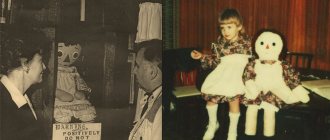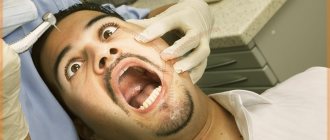Haptophobia is the fear of being touched. A person experiences a sharp hostility with the manifestation of vegetative reactions of the body, as with any phobia. When we meet friends, we shake hands and hug each other. A person free from haptophobia can easily engage in physical contact of a social nature without experiencing negative feelings. But there are people who do not tolerate touching - haptophobes. And today the fear of touch is reaching plague proportions.
Causes
The spread of the fear of hugs has been facilitated by the global migration of people from villages to cities. The townspeople lead an isolated lifestyle psychologically. Everyone around the city is strangers. Potentially dangerous. And people are increasingly becoming afraid of being touched.
Haptophobia can be caused by sexual violence. A person becomes asexual, hostility appears, personal space increases. And I don’t want to let others into it.
Often haptophobia is a consequence of another disorder:
- obsessive-compulsive disorder;
- anxiety disorder;
- mysophobia;
- diseases of a physiological nature: mental retardation, dementia, autism;
- catatonic manifestations of schizophrenia;
- Agaraphobia;
- paranoid mental disorder.
Haptophobia occurs in boys during adolescence. This is due to uncontrolled erection. It occurs when accidentally touching, shaking hands, or hugging. This could be an adult woman, a classmate, a sister. Physically this is natural and normal. But it brings a lot of worries. Because of this, teenagers try to avoid physical contact with others so as not to get into an awkward situation. The phobia may go away on its own or persist.
Tactilophobia is considered to be a synonym for haptophobia. It is worth noting that there is a slight difference between these concepts. Tactile phobes experience a fear of the touch of strangers.
Symptoms
Haptophobia manifests itself as anxiety during possible contact with others. A person, thinking that he will have to shake hands with strangers, experiences fear and tries to avoid contact at all costs.
Initially, a person who is afraid of touch reacts this way only to strangers. Touching loved ones does not cause a negative reaction. As the disease progresses, the person increasingly strives to isolate himself. He forbids anyone from entering his room and stops contacting others. The result is complete isolation. A person can no longer tolerate living together, even with loved ones. Breaks all social contacts.
In addition to psychological discomfort, haptophobia has physical (vegetative) manifestations:
- trembling in the arms, legs, neck;
- weakness, lightheadedness, faintness;
- dizziness;
- tingling in the limbs;
- dyspnea;
- palpitations, rapid pulse;
- nausea.
In severe cases, vomiting may occur. The autonomic system reacts differently for everyone. It depends on the characteristics of the body and on the cause of haptophobia.
Ways to overcome
Breathing exercises and various relaxation methods are used
to manage anxiety and panic attacks . Focusing on long, deep breaths reduces symptoms of touch anxiety. Mindfulness tactics, that is, understanding your thoughts and feelings at the moment of touch, help you develop individual ways to combat anxiety. Exercise and getting enough sleep are powerful ways to improve your overall mental health.
Patients with aphenphosmophobia generally respond well to treatment. Using daily techniques to overcome fear significantly reduces the negative impact of a phobia on a person’s life.
0
How to recognize a haptophobe
For a person with a fear of touch, physical contact is like an electric shock. He subconsciously feels threatened. Therefore, if you extend your hand, the person will not return the handshake. He may turn around and leave if he sees someone coming to say hello.
Such people rarely go out and avoid public transport, cinemas, and shops. They try to keep their distance when talking to someone. Some people wear gloves to avoid touching their body.
A person suffering from haptophobia will immediately wash his hand and wipe it with a napkin if he has touched someone. This is not disgust - this is a mental disorder. He needs to clear the surface from the touch of a stranger. And such a person can be strangers to everyone except his own wife and children, or just everyone.
If there is a haptophobe among your friends, you should not be offended by his actions. The person has no intention of offending anyone, he has a mental disorder, he needs help. Isolation in the case of haptophobia only makes the problem worse. Therefore, he needs communication, support from family and friends.
A typical behavior for a person with a fear of being touched is to wear closed clothing. Even on hot summer days, preference is given to trousers, long skirts, and long-sleeve sweaters. This is a subconscious desire to protect yourself from possible touches. This makes the haptophobe feel more comfortable.
Features of fear of human touch
Suffering from haptophobia:
- tries to avoid communicating with unfamiliar people. Does not enter elevators, rarely travels by public transport, is an infrequent visitor to shops;
- hates any touch - handshakes, friendly pats on the shoulder, hugs. Even when communicating with good friends. The exception is close relatives.
If everything is left to chance, haptophobia will progress. Gradually, a person will become unbearable to be touched even by loved ones. This will destroy personal life and lead to isolation. A person suffering from haptophobia may stop communicating with people and turn into a recluse.
Impaired social interaction
Haptophobia forces a person to isolate himself from the company of other people. Alone, the “patient” is calmer. Over time, he becomes more and more withdrawn, because we all strive to protect ourselves from danger and find spiritual comfort. Also haptophobes. But their concept of safety and comfort is distorted. For them it is the absence of touching. No potential danger. Lack of people nearby.
This problem often makes it impossible to work and communicate. A person leaves a place of work where he needs to constantly interact with others. He becomes withdrawn, and this negatively affects the psyche. For mental balance, a person needs communication, communication, interaction. This is how we are made.
Diagnostics
If a person notices symptoms of haptophobia, he will have to see a doctor to confirm the diagnosis. It is impossible to diagnose yourself, just as it is impossible to get a haircut, cut out an appendix, or heal a tooth on your own. Entrust your health to a professional - a person who has studied psychology for many years. This could be a psychotherapist, psychiatrist, neurologist.
Fear of touch is diagnosed using special questionnaires and tests for various disorders. Remember: most often, haptophobia is not an independent illness. This is a “component” for another, more serious mental disorder.
One way or another, you shouldn’t be afraid of such symptoms. Psychology is actively developing, and all ailments are treatable.
Haptophobia - what is it?
What is haptophobia? This is the fear of being touched by strangers or unpleasant people. Alternative names for haptophobia: aphephobia, haphophobia, haptephobia, hapnophobia, thixophobia. People who are afraid of the touch of other people are called gatophobes. Haptophobe constantly maintains distance between himself and other people. Touching is perceived as a violation of personal boundaries and comfort zone.
This is interesting! Sometimes haptophobia hides another phobia, such as fear of infection and germs or fear of sexual intimacy.
Treatment
Psychotherapy uses several different treatment models, alternating them for greater effectiveness:
- group therapy;
- cognitive behavioral therapy;
- drug therapy;
- hypnosis;
- psychoanalysis.
Medicines are prescribed to eliminate the physiological manifestations of the disease. The doctor will prescribe them based on the general picture of the disease.
Never prescribe medications for yourself!
Other methods aim to change negative associations associated with touch. Your doctor will help you understand that touching is safe and pleasant. Tactile contacts are necessary for every person for normal psychological health.
Psychologists advise hugging 3 to 8 people a day. This will help you get rid of depression, relieve stress, and improve your mood. Having haptophobia in a person alters this process. A person first needs to get rid of false fears and distorted reflexes associated with touch. For a haptophobe, such a number of hugs per day will most likely cause a panic attack. At the same time, the internal, subconscious need for hugs still remains, but it is not possible to satisfy it.
What can you do yourself?
If you are unable to contact a psychotherapist, you can use the helpline. Psychologists answer calls. Every city has a psychological support service. They will listen and give advice.
What else can you do?
- All alone, take a sheet of paper (use an electronic notepad, Word) and write down all the traumatic situations. Starting from early childhood.
- Reassess each situation and explain the reasons for what happened. Rethink.
- It is necessary to attach positive images and memories to each event. You must understand that what happened was an experience, and the reaction could have been softer, without injury. Find the positives.
- After that, look at each situation again. Emotions must change.
- Tear the paper or erase what you wrote. This is not in the present, these situations are in the past. And they won't happen again. Forget about them.
Remember that a lot of baggage from the past will slow you down on your path to the future. Let go of everything unnecessary. And think positive.
Types of phobias. Classification of phobias
Currently, more than 500 types of phobias have been described. The most common of these are social phobia and agoraphobia.
- Social phobia is a type of phobia that is characterized by a pronounced fear of being the center of attention of strangers, or of behaving in a way that will cause humiliation or embarrassment. This type of phobia manifests itself in social everyday situations - during a meeting with friends, lunch in a cafe, the need to speak at a meeting, and others.
- Agoraphobia is a type of phobia associated with “helplessness if things suddenly become bad.” This type of phobia manifests itself in the fear of traveling unaccompanied or being among strangers.
All other types of phobias are classified into the group of so-called isolated phobias.
Below are examples of just a few of them. Phobias of animals or insects:
- - cynophobia - fear of dogs;
- - Gatophobia - fear of cats;
- - arachnophobia - fear of spiders;
- - ophidophobia - fear of snakes.
Phobias associated with situations:
- - claustrophobia - fear of closed spaces;
- - ochlophobia - fear of crowded places;
- - monophobia - fear of being alone with oneself;
- - xenophobia - fear of foreigners, strangers.
Phobias associated with natural forces:
- - acrophobia - fear of heights;
- - nyctophobia - fear of darkness, night;
- - aquaphobia - fear of water;
- - pyrophobia - fear of fire;
- - thalassophobia - fear of the sea.
Health-related phobias:
- — odontophobia – fear of dental treatment;
- - bacillophobia - fear of microorganisms;
- - Cardiophobia - fear of cardiovascular diseases;
- - Hematophobia - fear of the sight of blood.
Phobias associated with conditions and actions:
- - stasibasiphobia - fear of an upright position and walking;
- - stasyphobia - fear of standing;
- - lalophobia - fear of speaking;
- - tremophobia - fear of trembling;
- - Basilophobia - fear of walking;
- - amaxophobia - fear of traveling in public transport.
Phobias associated with objects:
- - hyalophobia - fear of glass;
- - macrophobia - fear of large objects;
- - microphobia - fear of small objects;
- - computerphobia - fear of computers;
- - Belonephobia - fear of piercing objects.
Contact a specialist
Sign up for a consultation tel. 242-82-65
Make an appointment
Yuri Lvovich Muchnik
Psychiatrist-narcologist
Doctor of the highest category. 35 years of experience. Works at the Clinic named after. prof. F.F. Preobrazhensky since 2001









